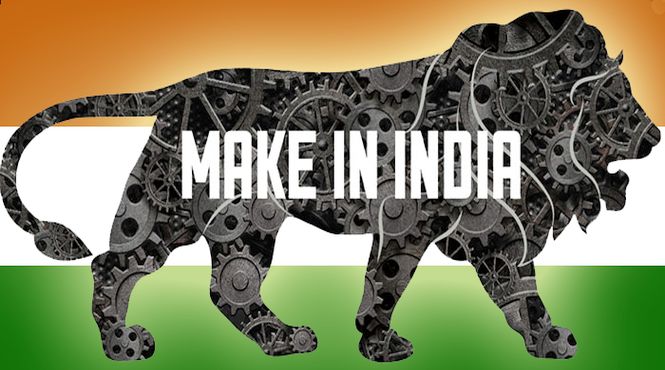News Details
Make in India - Where does HVAC Industry Stand?
11 September 2015
By Avinash Shaligram
Asst. Professor, Dept. Of Mechanical Engg.,
Pillai Institute of Information Technology, Engineering, Media Studies & Research, New Panvel
Introduction
We are well aware of the campaign launched by our Prime Minister to promote indigenous manufacturing. The mission certainly has its virtues, leaving aside the political pitch. It will help increase our GDP, create more jobs and improve the image of India as a competitive and quality manufacturing destination. While different industries and sectors will have their own issues and opportunities in meeting the government’s objective, this note is an attempt to look at the HVAC industry’s perspective and discuss the current status. From a manufacturing viewpoint, we need to look at HVAC&R products right from small appliances (refrigerators, freezers, room air conditioners), small to medium capacity unitary products, central plant equipment, cold storage systems as well as accessories such as cooling towers, pumps, valves and controls. The overall picture of indigenous manufacturing of products and systems is dismal. Worse still, there has been a steady decline in local products over the last 30 years or so. Let us analyse the scenario more granularly.
Compressors
We will find it difficult to find any product or system that uses a fully indigenously manufactured compressor. Compare this with good old days of 6A, 5H, 5F and 17CA models (Voltas) or AC70 series, KC and FK models (Kirloskar Pneumatic), etc. I recollect how exciting and interesting it was for me in Blue Star to manufacture York J series semi-hermetic compressors. As for the small hermetics, there has been a total whitewash as far as window and split RAC compressors are concerned. They are all imported. There is a glimmer of hope as players like Godrej have been able to maintain their indigenous compressor manufacturing, though they are a small minority. While it is a fact that there have been significant technology developments in compressors such as inverter and digital scrolls, screw compressors, oil-less magnetic bearing centrifugal compressors, etc., the other side of the story is that HVAC industry went on embracing new technology products (which is good) but without ever considering if such products can be manufactured here. The usual arguments dished out are lack of viable volumes (market size), quality and availability of raw materials and components, skilled workforce, etc. But then, a way forward has to be found if we have to tread the ‘Make in India’ path.
Heat Exchangers
Compared to compressors, HEs present a better picture. But here also, with the advent of plate heat exchangers (PHEs) and micro-channel heat exchangers (MCHEs), the trend is reversing. Veterans in the industry will recollect CDS and DXC shell and tube (S&T) heat exchangers that, no doubt, were huge and unwieldy from both the cost and space point of view. Subsequently, with the import and availability of specially enhanced tubes, they were replaced by compact models. But the new trend is that PHEs (both gasketed and welded) are almost fully replacing S&T heat exchangers. Now, there can be a debate as to whether this is desirable, especially from the perspective of ‘Make in India’. But the fact remains that PHEs are here to stay. The positive side (unlike compressors) is that there is a good amount of indigenous content, especially in gasketed products. Brazed plate HEs are all imported. Similarly the latest technology of MCHEs is also mostly
imported (except some companies who import the channels and fabricate the HEs here). The other major category is coils. Here also, while the enhanced inner grooved tubes are imported, there is significant indigenous value addition in terms of fin manufacturing and the complete assembly. But recently I was shocked to learn that some AHU manufacturers import coils en masse from, say, Thailand, which I felt is inexplicable. Overall, though, heat exchanger manufacturing has been the strength of Indian HVAC sector that should be maintained in future.
Fans and Blowers
Possibly next only to compressors in terms of volume and value, this segment also does not present a happy picture. Perhaps there is no AHU manufacturer today who uses an indigenously manufactured blower. Compare this with 1980s when Blue Star used to manufacture Lau design blowers, which were used in their AHUs. The readers will possibly recollect many such examples. Even axial type fans (used in air cooled condensers), which are really not hi-tech products, are imported today. In the first air cooled chillers made in Blue Star, we used GE Alstom make local exhaust fans of 36” dia, which were adequate for the job though they were too large in diameter for the CFM required and were noisy. But the point here is the same: if you want to go for new and better technology, why not get the designs and manufacture the products here rather than importing them in toto?
Accessories and Controls
In this segment, the picture is somewhat mixed. While we have good, totally indigenous cooling towers, the same cannot be said about pumps. Gone are the days when KSB and KBL pumps were used extensively. We now have the likes of Grundfos, Armstrong and Wilo. Again here, why this huge shift occurred is not easily understandable. On the controls side, it is a very interesting story. In the general industrial automation field there are local companies such as Siemens, Allen Bradley, Messung Systems, etc. But when it comes to PLCs for HVAC, there is no option but to import the products. Of course, like in the IT industry, here our engineers do a good job in programming, installation, commissioning, etc. But then why cannot we have 100% indigenously made PLCs exclusively for HVAC? Overall, I feel (at the risk of being told that I am living in the past!) the era of 1970s and 1980s, when collaborations were the order of the day, was good. You could get the latest technology from abroad and manufacture products here, suiting it to Indian conditions (such as high ambient, voltage fluctuations, etc.). I think somewhere along the line technologists, economists, politicians and bureaucrats did not pull together in arriving at policy decisions. Tailpiece
One segment that is an exception is the vapour absorption machine (VAM). Between Thermax, Voltas and the new entrant Kirloskar Ebara, there is a very large share of indigenous manufacture in VAMs. Of course this is a niche market and hence the observation here cannot be generalized. There also, some critical components like solution pumps have to be imported. But overall it is a model that needs to be emulated by other segments in the industry.
Disclaimer: The information provided within this publication / eBook/ content is for general informational purposes only. While we try to keep the information up-to-date and correct, there are no representations or warranties, express or implied, about the completeness, accuracy, reliability, suitability or availability with respect to the information, products, services, or related graphics contained in this publication / eBook/ content for any purpose. Any use of this information is at your own risk.
 Youth
Youth
 Women
Women
 Research for Ishrae
Research for Ishrae







